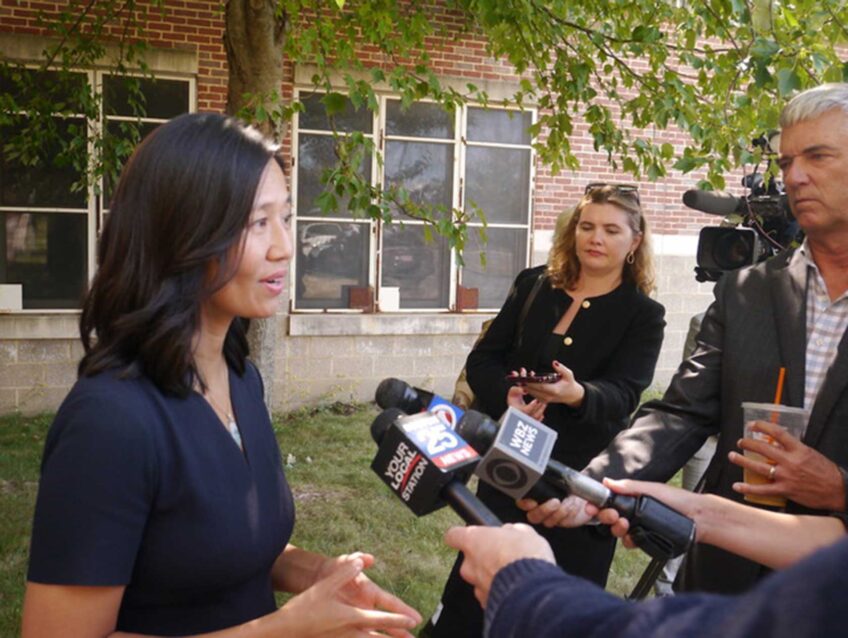
Last week, test scores reported to the Board of Elementary and Secondary Education missed the mark.
The accountability system designed to ensure ever-improving outcomes is falling short.
That Monday, the board was offered a solution. An administrative advisory committee report recommended measuring differently, thereby allocating the system’s “deficit narratives” more equitably. But Massachusetts’s accountability system isn’t for praise and shame; it is made to strategically spend money. In that, it fails.
The Department of Elementary and Secondary Education administers just shy of $10 billion annually, but less than one fifth of one percent goes to the yearly line-item targeting assistance to underperforming schools and districts. When DESE reports on the money — as is required by state law and the annual budget — state staffers, overhead, training, vendors and the occasional event planner take up around three-quarters of the funding.
Grant funding aligned with the accountability system is negligible.
Lawrence, one of three districts designated for comprehensive support by the state, gets around $400,000 because of its designation. The district spends about a quarter-billion annually. Its last turnaround plan tallies $2 million in state grants against $93 million in federal money, aside from school aid.
The primary aligned grants, Targeted Assistance and Strategic Transformation, give out millions of federal dollars.
In DESE’s view, “Massachusetts goes above and beyond” to provide “targeted supports to more schools and districts than” are federally required.
Identifying areas for funding is one purpose of the system. DESE’s summary says it helps “direct resources and assistance” to those who can’t catch up academically with their peers.
Without substantial incentives, the accountability system has produced lackluster results.
The public policy’s carrot-and-stick approach to academic underperformance is codified in Massachusetts’s federal filing for the Every Student Succeeds Act, President Obama’s landmark education law. An executive summary says the turnaround process involves both “funding” and “an aggressive system of identification, support, and intervention.”
The state plan is succinct: “If students are not demonstrating mastery of grade-level material and are not graduating, then schools and districts are not doing their jobs.”
Some stakeholders fixate on the stick. A letter from the superintendent of Lynn Public Schools, Evonne Alvarez, Ed.D., read to BESE last week, said the system “penalizes the urban school districts.” Last year, Priya Tahiliani, Ed.D., told BESE of “an imperfection in the accountability system” that led to a negative designation of a school in Everett that is “a model for the practices that DESE promotes.” Tahiliani leads Brockton Public Schools today.
The Massachusetts Consortium for Innovative Education Assessment, a state-funded coalition of six public school districts and their teachers’ unions, critiqued the council’s report the day it was published. They want a more “ambitious vision” for reform.
MCIEA argues “the core elements of the accountability system correlate strongly with wealth” and demographics, so its “punitive aspects … end up chiefly directed at low-income communities, immigrant communities, and communities of color.” They said its “stigmatizing labels” and “demoralizing mischaracterizations” of education “exacerbates segregation.”
Massachusetts has never undesignated a chronically underperforming school district.
This year, Holyoke is closer than ever. DESE’s Acting Commissioner Russell Johnston announced a transition phase at the district’s school committee meeting in March. A capacity building plan details expectations for the school committee and receiver to wrest back local control. Even so, Johnston must review the district’s progress towards goals before a formal exit from state receivership.
If Holyoke exits receivership soon, it may be in spite of the accountability system, not because of it. The 2024 MCAS data released last week, with few exceptions, was below the 2022 baseline data in its turnaround plan. The system’s targets increment up from past performance annually. In 2023, English Language Learners in grades 1 – 8 were making progress on the ACCESS test at basically the same rate as 2022; in high school, 10% less.
Some of the target-setting for district turnaround is lofty.
Southbridge’s budget presentation commits to 50% of English learners making progress toward language proficiency annually, 12 points higher than the 2023 state average. Southbridge Public Schools is aiming for 15% or lower chronic absenteeism. In 2024, Massachusetts is aiming for 17.4% in early grades and 24.8% in high school. A laudable goal, 75% four-year graduation rate for students with disabilities, would require a big jump for SPS.
Such incoherence reflects how paltry state funding for turnaround grants appears when measured by the need. The accountability system spotlights that need by measuring outcomes.
The state plan filed in May 2024 reads, “We want to make sure that the signal (academic performance) is not drowned out by noise.” It argues that “more inputs may paint a broader picture of school performance,” but may “mask schools that are struggling with basic literacy, mathematics, and science instruction.” It states, “Combining outcomes and inputs into a single system blurs its focus.”
That is precisely what the recent report recommends, reading, “the accountability system should include indicators that reflect the breadth and depth of the Commonwealth’s educational goals. This includes input and output measures that go beyond academic performance on state tests.”
Also calling for Massachusetts to “right-size” federal requirements, its recommendations would smooth out the visibility of wrinkles in student outcomes.
At times calling for “high-leverage” metrics that predict performance, the advisory committee preferred some indicators that were “under the control of district and school leadership.”
“Leading indicators like instructional decisions, professional development selection,” as well as district-defined metrics like “multilingual certificates, industry credentials, CTE coursework completion, [and] work-based learning experiences” could be introduced.
“Clearly the boldest thing in here is thinking about school climate in terms of a core indicator,” said DESE’s chief officer for data assessment & accountability, Rob Curtin, last Monday. Currently measured by a student survey called VOCAL, the measures of sentiment could weigh-in against test scores.
Even as DESE revisits its method for measuring academic outcomes, the state reported mixed results in the current system.
Eight fewer schools appeared in the second-lowest category, “Focused /Targeted Support,” as did six fewer districts. The top category, “Meeting or Exceeding Targets,” also shrank, losing 73 schools and 18 districts.
A subset of top performers, “Schools of Recognition,” earn the equivalent of a gold star. 75 such accolades were distributed in 2023, compared with 64 in 2024.




